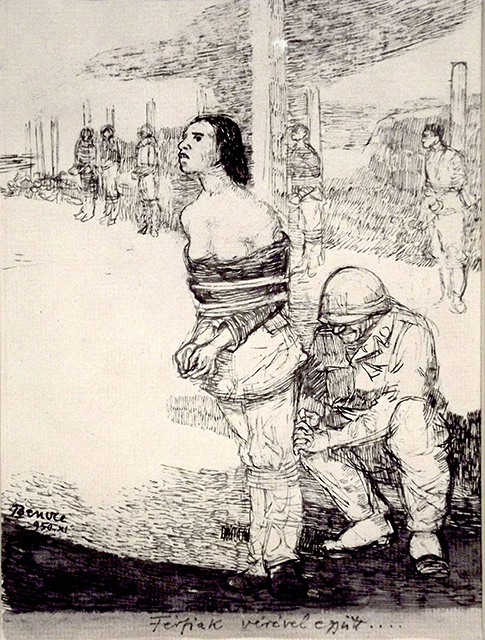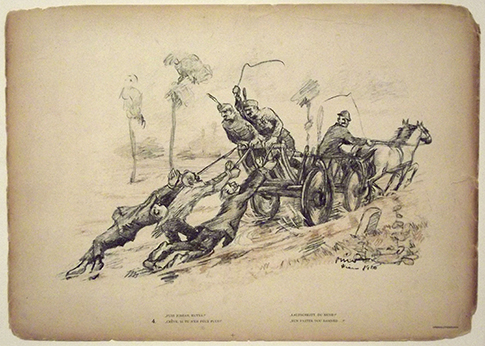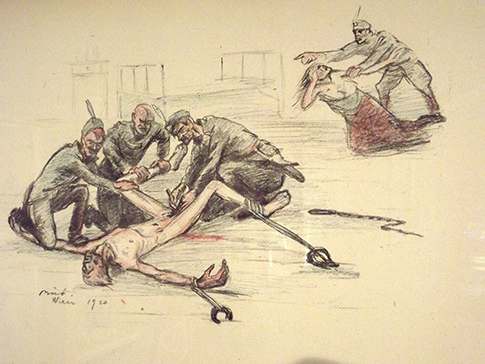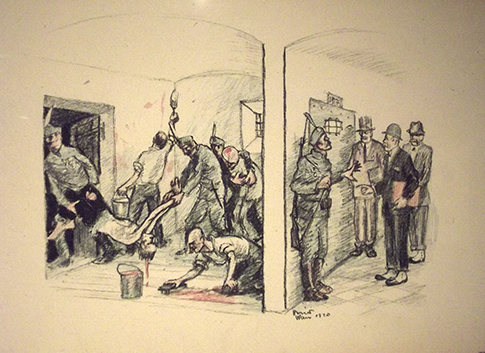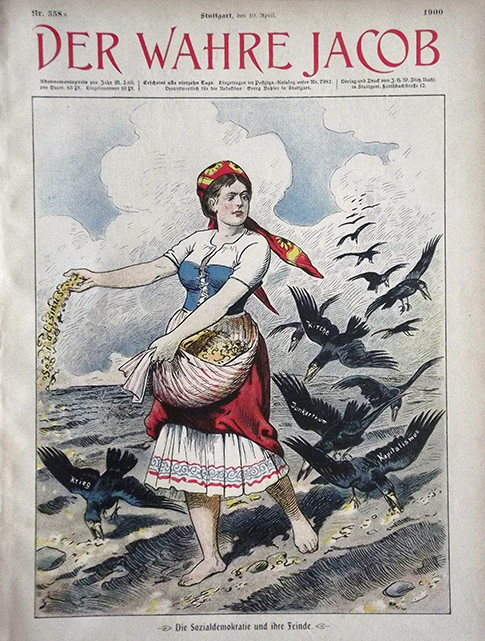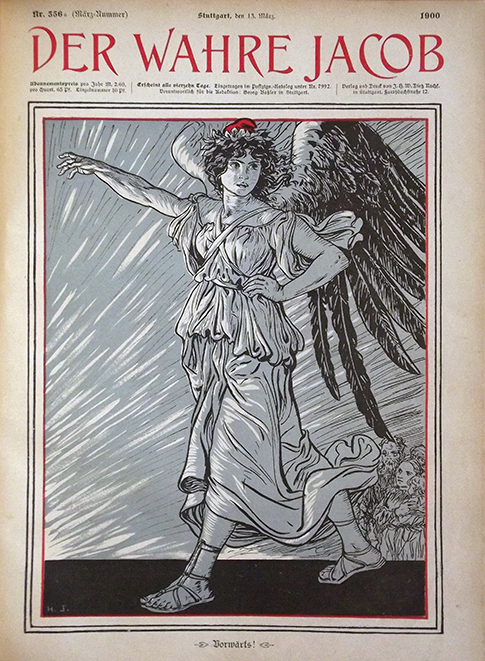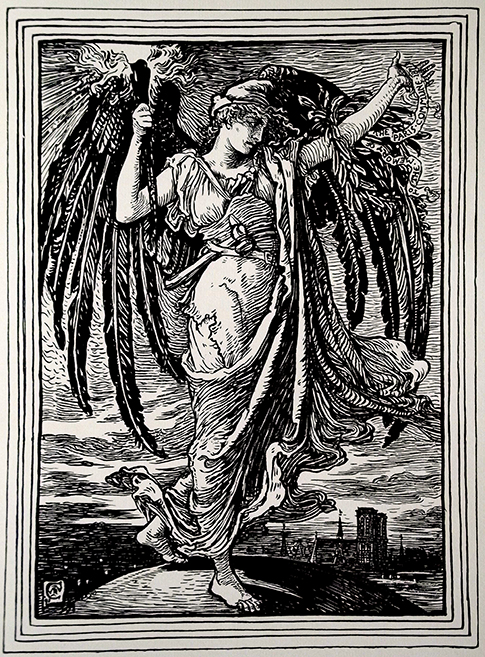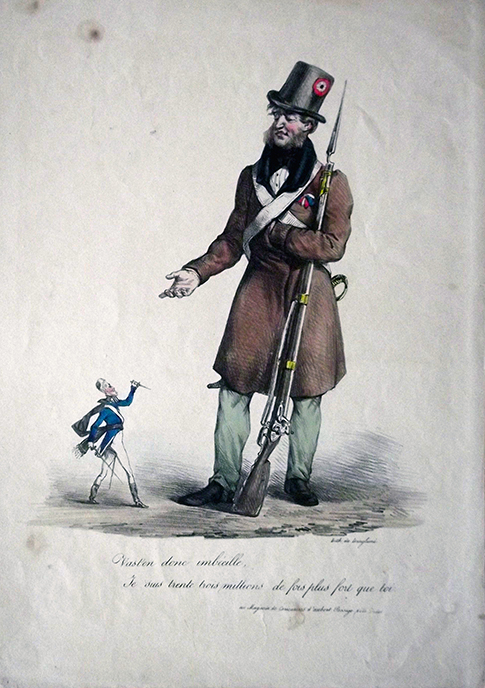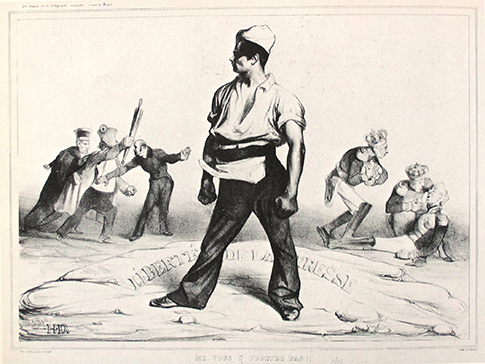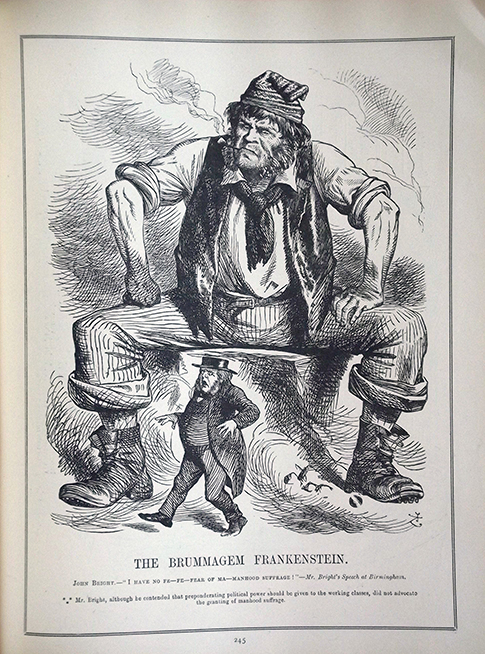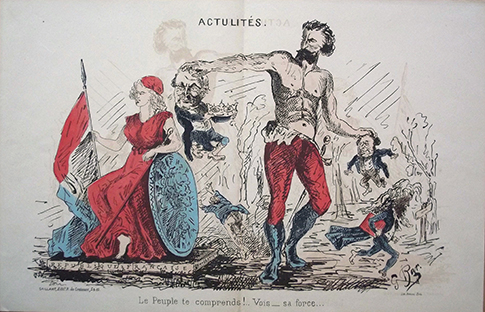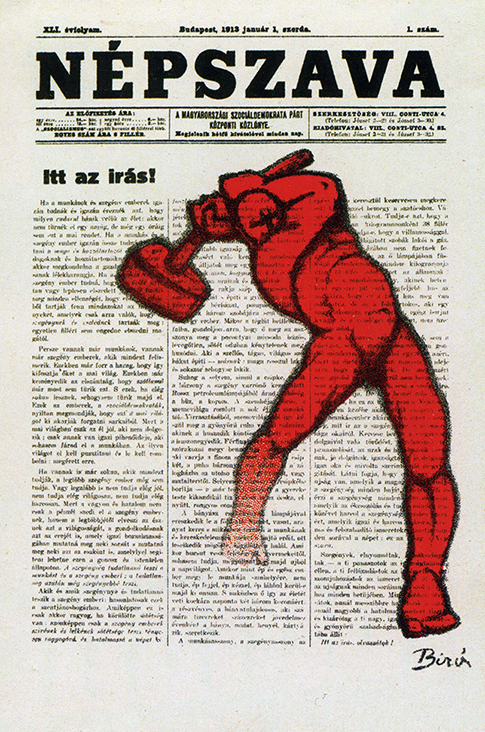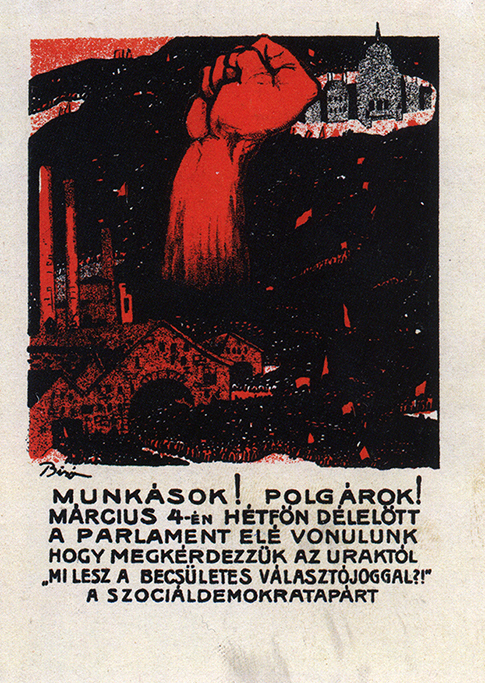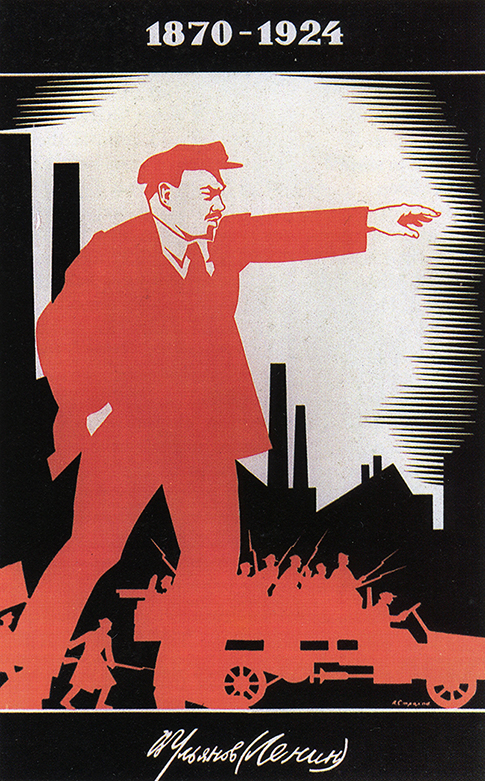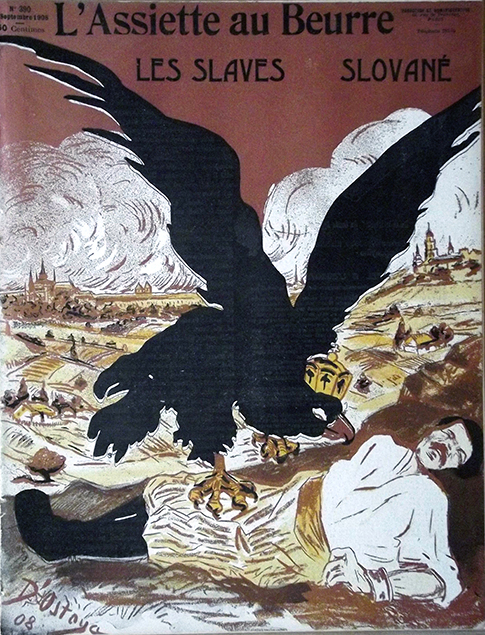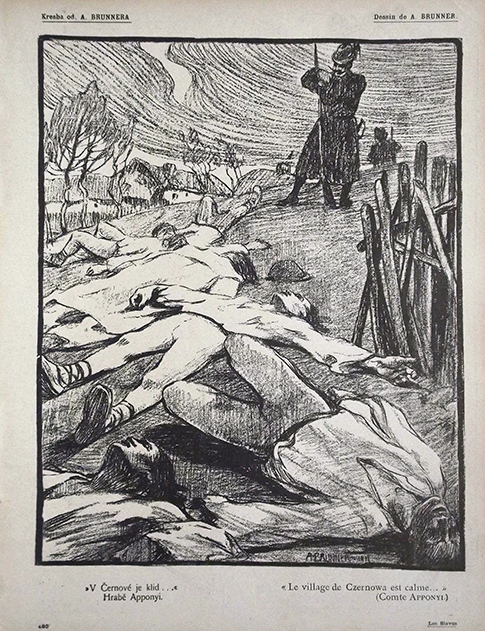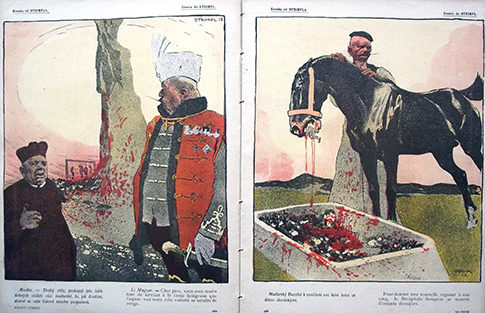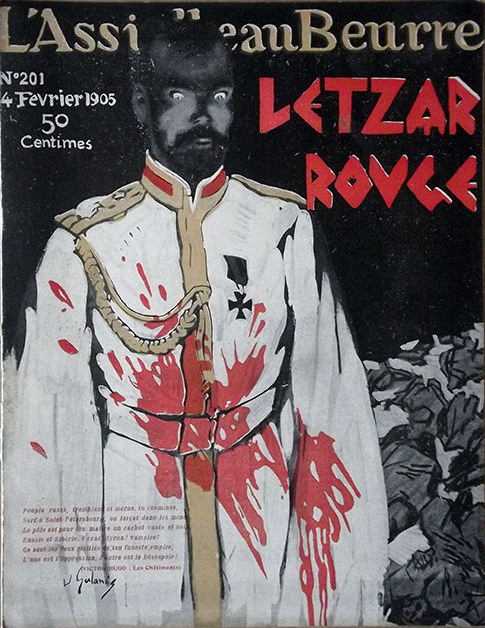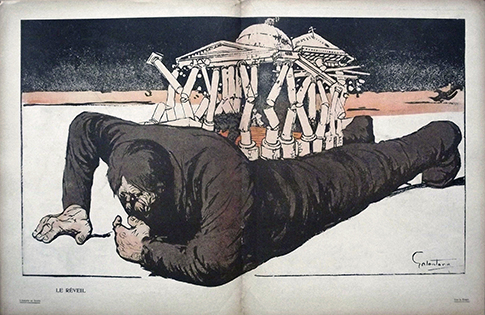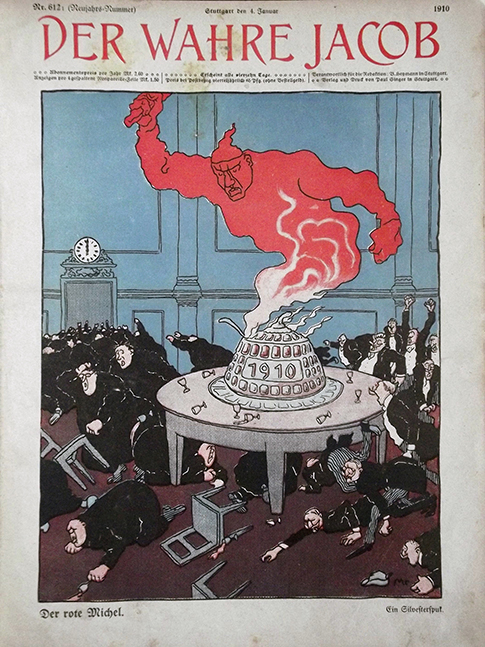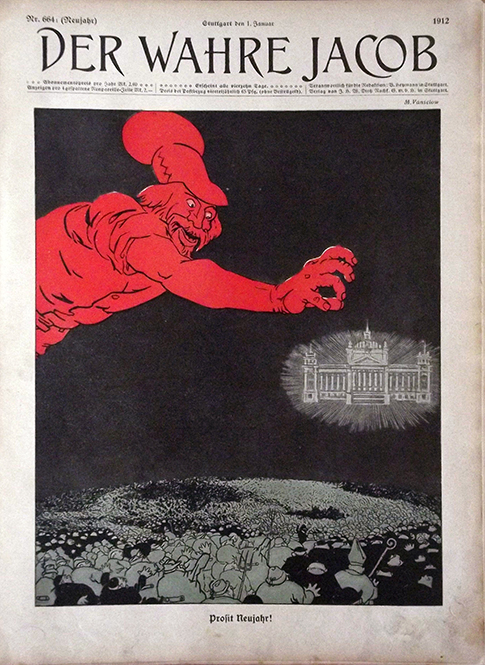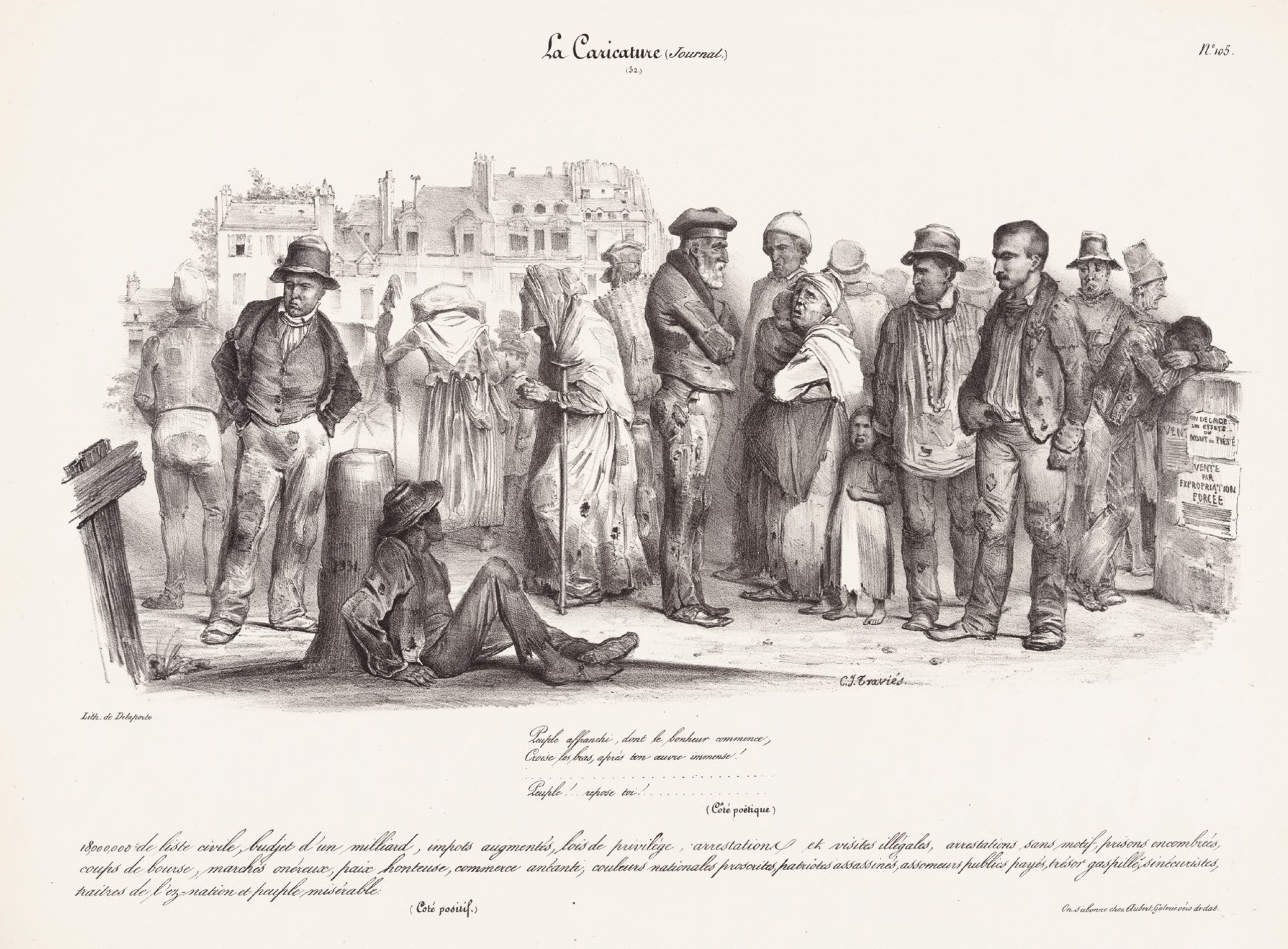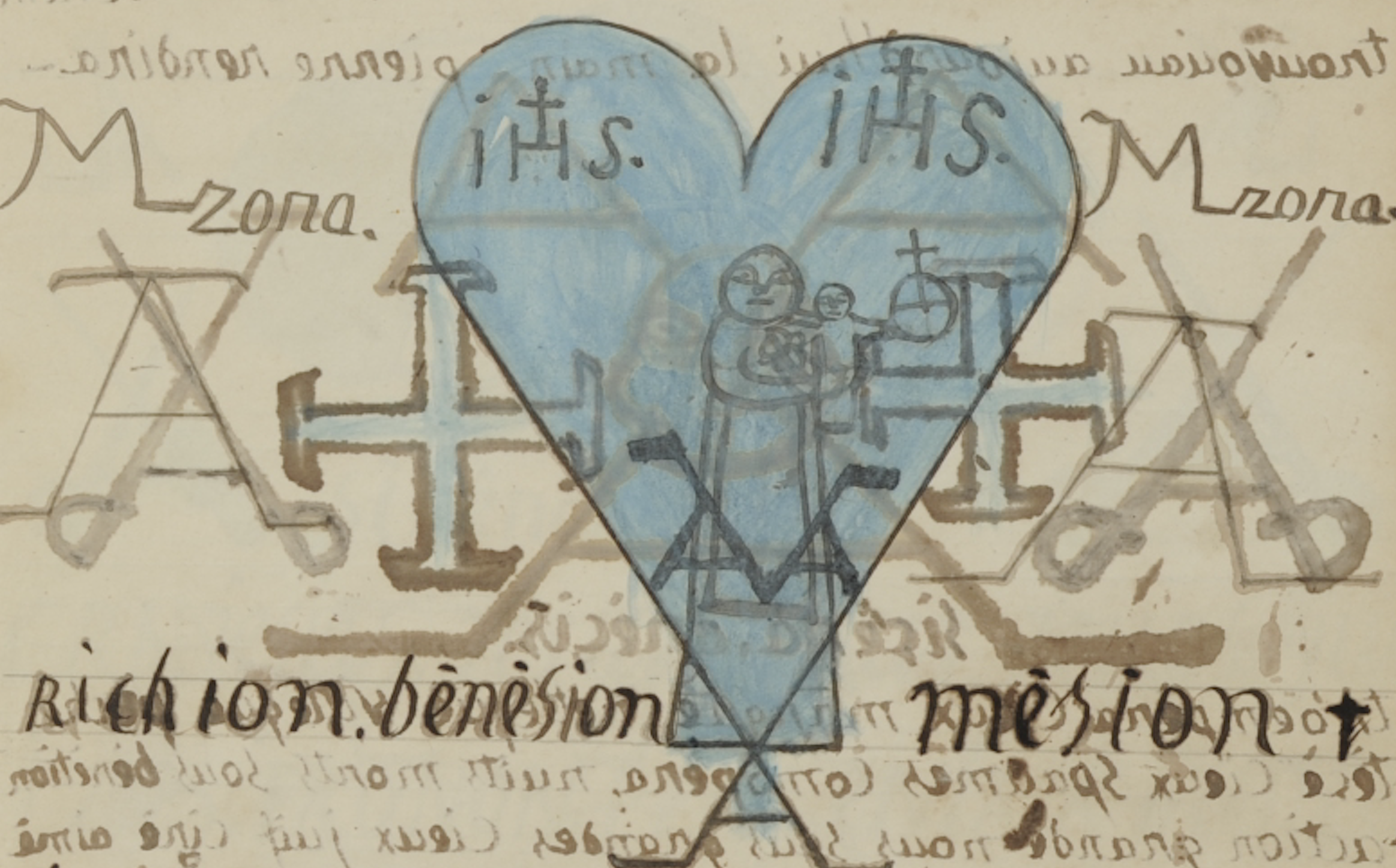Alexander Roob]
[January 1, 2015
Think about Horthy! The interventionist art of Mihály Biró
The Melton Prior Institute is represented in the exhibition “Turning Points. The Twentieth Century through 1914, 1939, 1989 and 2004 ” at the Hungarian National Gallery Budapest with an extensive installation. The arrangement “Gondolj Horthyra / Think about Horthy” which opens up this display of contemporary artworks reflecting the complex history of the 20th century through the example of Hungary, confronts two outstanding examples of Hungarian graphic art. Both works are documentations of war, torture and terror and were for various reasons in the country itself hidden from the public eye for decades: The renowned Horthy-cycle by Mihály Biró (1886–1948), which is shown together with a presentation of the outline history of his interventionist art and a graphic cycle on the Korean War by Bencze László (1907 -1992), which was created thirty years later.
The latter work, a series of fourteen pen drawings by Bencze László from the collections of the Hungarian National Gallery, entitled “Gondolj Koreara / Think about Korea,“ has won the prestigious Kossuth Prize in 1952 and was subsequently published as a portfolio of offsets. The central subject is the Sinchon Massacre, which took place in North Korea between 17 October and 7 December 1950. It resulted in over 30,000 victims, mostly civilians. This war crime was blamed by the Communists on the invading American army. As with Picasso’s famous painting, Massacre in Korea (1951), Bencze’s series was inspired by Goya. Its motifs and compositions also show the influence of the Chinese woodcut movement led by Lu Xun and associated artists, such as Li Hua, Zhao Yannian and Zheng Yefu.
Bencze László: Think of Korea, Budapest 1952
In contrast to the distant idealized approach of László, Mihály Biró´s graphical interpretations of the investigation reports on the White Terror in Hungary and the anti-Semitic pogroms are still able to touch and shock one in their artless, drastic access. Two copies of this lithographic cycle, which Biró has published in in 1920 in his Austrian exile under the title “Horthy“, are currently stored in the depot of the National Museum Budapest. The series has lost none of its explosive nature, quite the contrary. The eponymous Regent Miklós Horthy, who as the Commander of the National Army was internationally made responsible for the atrocities, is currently vindicated by the ruling party of Viktor Orbán. Horthy is the central symbolic figure, which connects the aggressive Magyarization of the Hungarian aristocracy on the eve of the first world war not only with 1944 but also with the status quo of 2014.
Mihály Biró:Horthy, Vienna, 1920 (exhibition view)
Mihály Biró: „Run faster you damned…!“, in: Horthy, Vienna, 1920
Mihály Biró: „Look at that jewish father of yours!“, in: Horthy, Vienna, 1920
Mihály Biró: The beasts!, in: Horthy, Vienna, 1920
The drastic depictions of the White Terror and the “legal arrests” were based on the detailed investigation by the British parliamentarian Josiah C. Wedgewood, as well as on personal reports and other official documents. Biró published the reports in graphic detail, not even shying away from including the head of state in the scenes, as a kind of accusation.
Mihály Biró: „The legal order“ re-established !, in: Horthy, Vienna, 1920
Mihály Biró: „The govenor” has a good time, in: Horthy, Vienna, 1920
Mihály Biró: “Hurry up! The mission is at the door!” , in: Horthy, Vienna, 1920
Besides this folder of lithographs, Biró also drew a smaller, postcard version of the Terror series. He must have been entirely aware of the consequences that would result from his publication. In his absence, a warrant for his arrest was issued in Hungary, and he was permanently expelled from the country. Proceedings against him were only halted in 1943, a few years before his death.
The two graphic cycles are accompanied by a display case presentation with materials from the collections of Melton Prior Institute, which makes the evolution of Mihály Biró´s influential socialist graphic style visible in the context of French press graphics and the graphics of the Russian Revolution.
The Red Sower
During his studies at the Guild of Handicraft in Chipping Camden, Mihály Biró (1886–1948) learnt about the traditions of interventionist art, which began with the work of the wood-engraver and writer William James Linton and his student, Walter Crane. Following on from Crane, Biró began to collect graphic motifs from the French revolution, and by placing them in the context of the international socialist movement, he charged them with new iconic power. After emigrating from Hungary, he made illustrations mainly for social democratic campaigns in Austria. In the meantime, he also worked for Der Wahre Jacob, the foremost German-language satirical magazine of the day, which was published in Stuttgart and Berlin by the socialist publishing house J. H. W.-Dietz-Verlag.
J. J. Grandville, „Je séparerai l’ivraie du bon grain“ (Jésus Ch.), in: La Caricature, Paris, 6 October 1831, lithograph (MePri-Collection)
The Republican campaigns initiated between 1830 and 1835 by the Aubert publishing house, led by the French caricaturist Charles Philipon, are regarded as the universal starting point for the development of socialist graphic art.
Georges Raoul Eugène Pilotelle,Croquis Révolutionnaires: La Commune Arrêtée Par L’ignorance À La Réaction, Paris, 1871, woodcut coloured with stencil ( MePri-Collection)
The French caricaturist Pilotell was one of the most productive art propagandists of the Paris Commune. With the publication of his periodical, La Caricature politique, he was clearly following in the footsteps of Charles Philipon.
Hans Gabriel Jentzsch, Social Democracy and its Enemies, in: Der Wahre Jacob, Stuttgart, 10 April 1900, zincograph (MePri – Collection)
Hans Gabriel Jentzsch, Forward! (after Walter Crane), in: Der Wahre Jacob, Stuttgart, 15. März 1900, zincograph (MePri – Collection)
Walter Crane, In Memory of the Paris Commune, March 1891, in: Cartoons for the Cause – Designs and Verses for the Socialist and Labour Movement, London 1896 (MePri – Collection)
Walter Crane was, along with William Morris, one of the founding members of the British Socialist League. He produced political drawings for several party newspapers, including Justice and The Commonweal. As his caricatures were republished on the continent and overseas, they soon became popular even outside the United Kingdom.
Mihály Biró , The Red Sower, in: Der Wahre Jacob, Berlin, 24 November 1928 (MePri-Collection)
Vois – sa force…
Biró’s hallmark, the red “Superman”, whom he created in 1912 for the Hungarian Social Democratic Party (MSZDP), continued the pictorial topos of the worker-colossus that had developed during the French Revolution of 1830 and again at the time of the Paris Commune. Biró would later draw numerous variations of the emblematic Hercules figure, writing his name in the history of the evolution of Bolshevist iconography.
Anon., “Vas-t’en donc imbécile, je suis trente trois millions de fois plus fort que toi“, in: Magasin de Caricatures, Paris 21. August 1830, lithograph (MePri – Collection)
This drawing, published by Philipon, illustrates the enormous greatness of the citoyen compared with King Charles X, the last of the French Bourbon rulers, who was deposed just a few months later by the events of the July Revolution. This print formed the basis of Daumier’s hugely influential lithograph, “Ne vous y frottez pas!! – Liberté de la Presse” (Do not meddle with it! Freedom of the Press), published in 1834, in which an exaggeratedly large Jacobin printer flexes his muscles, to the terror of the miniature monarchs and clerics assembled around him.
Honoré Daumier, „Ne vous y frottez pas!! – Liberté de la Presse”, 1834
John Tenniel, “The Brummagem Frankenstein”, in: Punch Magazine, London 8 September 1866 (MePri – Collection)
G. Bar, Actualites – „Le peuple te comprends! … Vois – sa force…”, Paris 1871, setncil coloured wood engraving (MePri – Collection)
Mihály Biró, „Munkások! Polgárok!…”, Budapest, 1912, (postcard version)
Mihály Biró, Népszava, Budapest, 1912, (postcard version)
Vladimir Mayakovsky, GPP # 141 (detail) , Moskow April 1921
A. Strakhov, V.I. Ul´yanov (Lenin), 1924
Explosive caricatures
The libertarian book dealer and publisher, Samuel-Sigismond Schwarz, an émigré from Budapest, founded his legendary Parisian caricature magazine, L’Assiette au Beurre, in 1901. This weekly magazine was built entirely on the persuasive force of its pictures, while its title suggested nothing less that a radical reorganisation of existing systems of ownership. Schwarz did not restrict his artists with editorial or stylistic requirements, but indeed guaranteed them mass distribution in acceptable printing quality, so he was able to attract some of the boldest and most progressive artists in Paris at the time, including Kees van Dongen, Jules Grandjouan, Juan Gris, Henri-Gustave Jossot, František Kupka, Théophile Steinlen, Félix Vallotton and Jacques Villon. Despite being banned or censored in many countries, the graphic fireworks and anarchistic fervour of the magazine exerted enormous international influence, not least on the way graphic design developed in revolutionary Russia.
Jules Grandjouan, „A bas les Monopoles“, in: L´Assiette au Beurre # 149, Paris, 6. Februar 1904, zincograph (MePri – Collection)
Georges d´Ostoya, Les Slaves / Slované, in: L´Assiette au Beurre # 390, Paris, 9. September 1908, zincograph (MePri – Collection)
Zymunt Brunner, Le village de Czernowa est calem…, in: L´Assiette au Beurre # 390, Paris, 9. September 1908, zincograph (MePri – Collection)
Ludvík Strimpl, Les Slaves / Slované, in: L´Assiette au Beurre # 390, Paris, 9. September 1908, zincograph (MePri – Collection)
The subject of the special edition was the policy of Magyarisation pursued by the Hungarian aristocracy and the marginalisation of the ethnic Slovak population, which came under international scrutiny after the Czernová massacre.
Dimitros Galanis, Le Tzsar Rouge, in: L´Assiette au Beurre # 261, Paris, 4. Februar 1905, zincograph (MePri – Collection)
Gabriele Galantara, Vive la Russie, in: L´Assiette au Beurre # 254, Paris, 10. Februar 1906, zincograph (MePri – Collection)
Gabriele Galantara, Vive la Russie, in: L´Assiette au Beurre # 254, Paris, 10. Februar 1906, zincograph (MePri – Collection)
Anon., Der rote Michel, in : Der Wahre Jacob, Stuttgart, 4. Januar 1910, zincograph (MePri – Collection)
Maximilian Vanselow, „Prosit Neujahr!“, in : Der Wahre Jacob, Stuttgart, 1. Januar 1912, zincograph (MePri – Collection)
“Turning Points. The Twentieth Century through 1914, 1939, 1989 and 2004“, curated by Zsolt Petrányi and Vitó Vonits Purcsár, Hungarian National Gallery Budapest, 14 November 2014 until February 15, 2015. Exhibiting artists: Johanna Kandl, Andreas Fogarasi, Josef Dabernig (Austria), Katerina Šedá (Czech Republic), John Timberlake (England), Kristina Norman (Estonia), Société Réaliste (France), Clemens von Wedemeyer, Melton Prior Insitute (Germany), Shy Abady (Israel), Paolo Ventura (Italy), Motoyuki Shitamichi (Japan), Artur zmijewski (Poland), Iosif Kiraly (Romania), Mikyta Svatopluk (Slovakia), Laibach/Neue Slowenische Kunst (Slovenia), Democracia, Javier de Villota (Spain), Istvan Balogh (Switzerland), and the Hungarian artists: Zsolt Asztalos, Zsolt Bodoni, Péter Forgách, Szabolcs Kispál, Adrián Kupcsik, János Sugár and Attila Szucs.
With best thanks for their kind support to Jutta Gehrig (Goethe Institute Hungary) and Zsolt Petrányi (Hungarian National Gallery Budapest)

